Movie Review – Harakiri
Principal Cast : Tatsuya Nakadai, Rentaro Mikuni, Akira Ishihama, Shima Iwashita, Tetsuro Chamba, Masao Mishima, Kei Sato, Yoshio Inaba, Yoshiro Aoki.
Synopsis: An elder ronin samurai arrives at a feudal lord’s home and requests an honourable place to commit suicide. But when the ronin inquires about a younger samurai who arrived before him things take an unexpected turn.
*****
Without question, Harakiri is a cinematic masterpiece. I know, it’s a bit weird to give away the rating of a film at the opening of a review, but there will be few film fans among us who wouldn’t state that this film, with is astonishing cinematography and desperately melancholy plot, a scathing indictment on Japan’s “honour” codes that resounds through the ages is quite simply a piece of cinematic beauty. Indeed, as a film it is remarkably cinematic – few films have such immaculate construction or masterful use of the widescreen ratio employed by director Masaki Kobayashi – and it’s a rare thing to consider that Harakiri is a film that should only be seen on the largest screen imaginable.
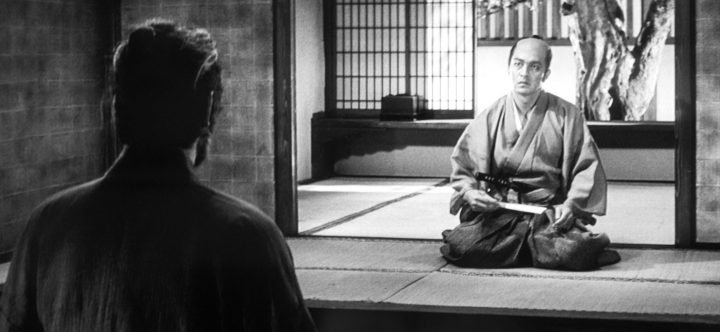
Japan in the 1630’s, and wandering ronin (masterless samurai) wander the lands, arriving at houses to posture for the act of harakiri (or, seppuku, an act of suicide by disembowelment) but are turned away for money, due mainly to proud houses not wanting to be associated with the act. One such ronin, Tsugumo Hanshari (Tatsuya Nakadai) arrives at the Ii Clan household and asks of the senior counsellor Saitu Kageyu (Rentaro Mikuni) to perform the ritual, to which Saitu recounts the story of another young ronin, Motome (Rentaro Mikuni) who arrived earlier, pleading the same case, only to actually have to go through with the act when Saitu called him out on possibly being a fraud. As he prepares for his own death, Hanshari calls out three of Saitu’s retainers as his second (somebody who beheads the victim after the act, as a final honour ritual), who were known to have coerced Motome’s suicide, all of whom refuse to attend. Waiting, Hanshari and Saitu trade dialogue about the nature of honour, while Hanshari recounts the long, sad history of Motome and his young love, wife Miho (Shima Iwashita) and infant son. In doing so, Hanshari eventually contorts the code of honour until Saitu is placed into an unenvious position indeed.
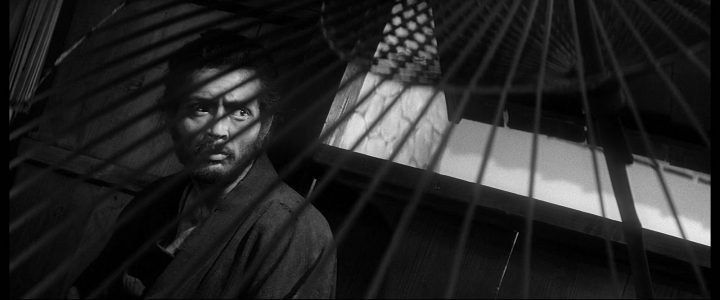
As intimate as Harakiri’s story is, the film is as epic a masterwork as is possible to achieve. Virtually no frame of this film isn’t absolutely glorious, with technical skill behind the camera that approaches Leone-esque skill and use of framing, an aspect that goes a long way to accentuate the already heady story of honour culture and unnecessary death in 15th century feudal Japan. The story, written by Shinobu Hashimoto (a frequent collaborator with Akira Kurosawa) is indicative of the very thing I detest about these kinds of cultures, where honour and duty (particularly the former) is more important than common bloody sense, although who am I to judge what Japan’s historical legacy might have wrought otherwise.
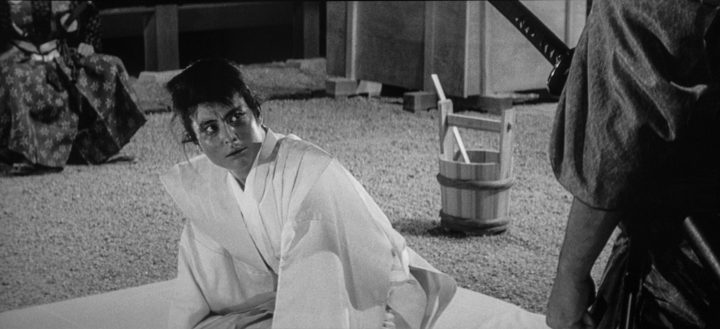
A story of death, revenge, loss and mourning, of honour and pride, Harakiri is a distillation of the Hollywood Western with swords instead of guns, and clans instead of homesteads. Told mostly as flashbacks, the film’s slow unravelling of mystery is its most fascinating aspect, as the viewer tries to work out where this potentially deadly plot might go. Kobayashi’s fluid, incredibly stylish direction maintains a sense of Hitchcockian tension throughout much of the film, as the combative friction between Hanshari and Saitu reaches its zenith following a series of revelations during the third act, and it’s through both the direction of the film and the potent, incredibly restrained performances from the leading actors in Nakadai and Mikuni, that Harakiri remains an enduring classic of not only its genre but of film in general.
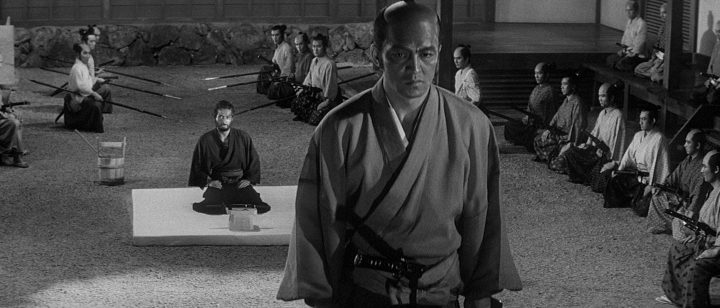
Frankly, Harakiri is one of the most beautifully framed and photographed films I’ve ever seen, period. There are few films I’m aware of that can approach it from a technically glorious standpoint, save perhaps Lean’s Lawrence Of Arabia or maybe the aforementioned Sergio Leone’s Dollars trilogy. Kobayashi’s use of the film’s anamorphic frame is sublime, every angle, every movement of the camera, every wide shot and closeup serves only to move the story forward. It’s as crisp and clean a film as you’ll see from an editorial standpoint as well; sometimes these older films feel a touch clunky with narrative expeditiousness, usually through limitations in the medium of the time, but Harakiri suffers no such problems. It’s a masterful display of cinematic kineticism: the action in the film’s latter half is staged beautifully, while the lengthy conversation sequences taking place in Saitu’s dojo are hypnotising even in their stillness.
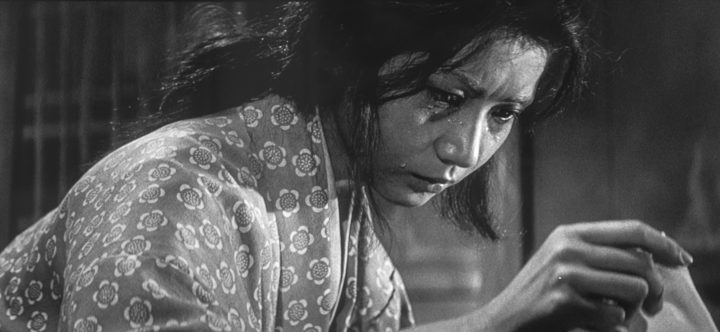
Kobayashi injects a constant theme of movement in his film, with copious tracking shots accompanying angular framing and lengthy wide shots to tell his story. The film boasts only a few close-ups, instead content to rely mainly on wider and mid-range shots that convey far more emotion and storytelling for the eye to look at than most modern masters can command. The film was shot in black and white, and this monochromatic crispness looks positively stunning today: as I mentioned, it’s the kind of film that’s perfect for the biggest cinema screen you can find, it’s that impactful. Every shot tells a piece of the story, or exacerbates tension, or conveys an inherent sadness to Hashimoto’s tale that I found stunning indeed. The eye is constantly drawn to every part of the screen, and as a technical exercise Harakiri is one of the most impressive examples of the medium I’ve yet witnessed.
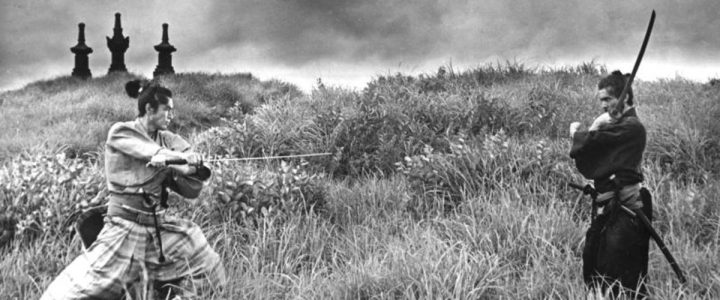
Harakiri is a remarkably moving and infuriating film for the story it tells. It’s desperately sad, a story of futility and honour that is almost mournful of the tragedy it depicts, and is captivating for its unveiling mystery and simple elegance of story. It doesn’t try and be more showy than it needs, the film never shies away from its subject matter, and both Tatsuya Nakadai and Rentaro Mikuni provide compelling lead roles alongside solid support work by the rest of the cast. Filled with amazing visuals, honed to perfection by Kobayashi’s amazing eye for detail and thematic truth, Harakiri is a glorious work of Asian cinema and by far one of the most visually fulfilling films of any era it’s been my pleasure to witness. Essential, captivating, astonishing: few films can claim to be legitimate masterpieces, but this one can do so with justification.


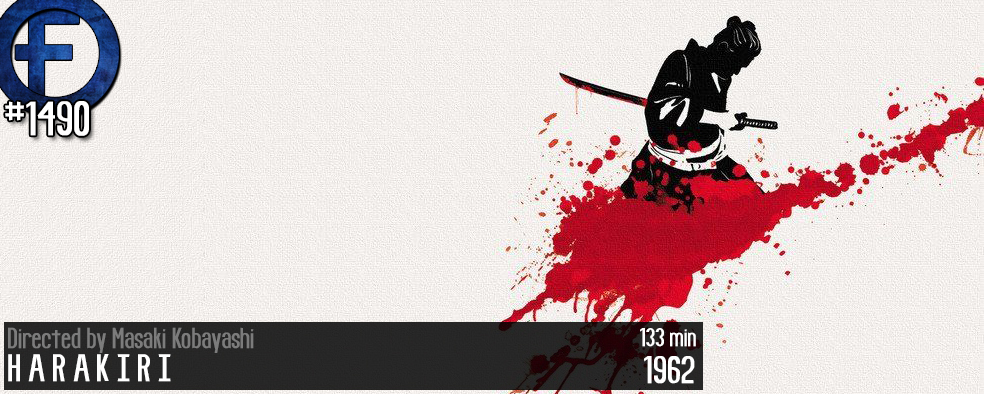
I’m glad you finally watched this! It only took you a year and a half to do it since I posted my review. 🙂 Anyway, I don’t have much to add to the conversation, except that this is a masterpiece, and everyone should watch it.
ha ha, yes, it took me a while, but such is the depth of the pile I need to work through! Thanks mate, you’re absolutely correct, this film is a masterpiece.